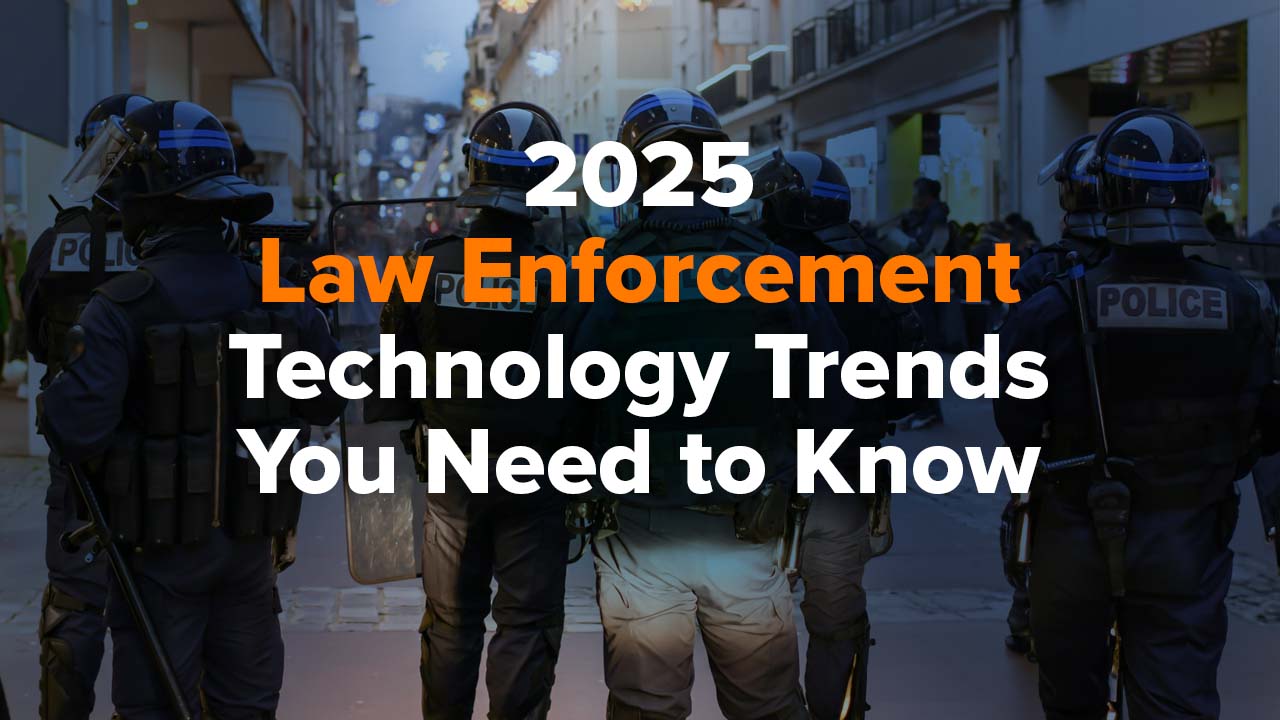By Mike French | January 11, 2023
Security professionals can never rest. Finding time to pause and look over the horizon can seem impossible when so many pressing demands exist in the here and now. That feels more true today than ever before.
- Risk of security demands outpacing organizational change
- Continued security convergence and integration
- A new focus on the long-term value of physical security
- Long-term plans to support hybrid working
- More cyber-aware employees, customers & criminals
- Zero-Trust leaps to physical security
- Continued growth in analytics
- Monitoring space utilization becomes increasingly important
The past three years have been a whirlwind of disruption as we’ve navigated the security and logistical challenges of COVID lockdowns and the resulting return-to-work plans. And does anyone feel like their organization has gotten back to normal? Let’s be honest: there won’t ever be a return to normal. Public and private life has permanently changed, and we need to start thinking about security differently.
And while many of the physical security trends from 2022 are ones we continue to face, we wanted to share some thoughts on what 2023 will hold for security professionals.
Real Time Networks has pulled together some of the top trends we expect to see in physical security in 2023. These items emphasize the role of our specialty: smart technology. We compiled these trends using insights from conversations with law enforcement and security professionals across North America and the UK over the past year.
Physical Security Smart Technology Trends
Risk of security demands outpacing organizational change

Coordinating physical security programs and projects also requires coordinating many different teams across your organization. It’s a complex task. There’s the security team, facilities, information technology (IT), human resources (HR), fleet management, and others.
Traditional, siloed organizations often struggle to handle these types of complex programs. Teams resist new initiatives they see driven by outsiders, they compete for space in the company’s budget, and poor communication leads to uncoordinated decision-making across teams. As a result, siloed organizations can sometimes feel adversarial rather than collaborative in working toward the company’s strategic goals.
2023 presents both risk and opportunity for large, siloed companies. If they don’t break down barriers and integrate their physical security program across the entire organization, they risk becoming vulnerable to the next generation of physical and cyber threats. Unfortunately, those are the exact types of blind spots that attackers crave.
On the other hand, organizations that break down institutional barriers should be able to align their physical security programs better to their overall strategic goals. As a result, they’ll not only be better-positioned to handle next-generation, blended threats, they might even put themselves ahead of their competitors in the market.
Continued security convergence and integration

Security convergence is the blending of physical and network security concerns. It has been an ongoing phenomenon for years, but with the recent rapid expansion of Internet of Things (IoT) technology, convergence is set to become a hot topic in 2023.
More and more physical security systems are now converged and networked to the IoT. Everything from surveillance cameras to sensors, alarms, access control systems, and personal security badges. Those systems all need to integrate and work together. We expect to see a proliferation of converged, smart security systems and new security threats in 2023.
A new focus on the long-term value of physical security

We’ve spoken about rethinking physical security from being a cost center to a potential revenue center. It looks like some industry leaders are starting to catch on.
In 2023 and beyond, we’ll see more organizations look to understand the total cost of ownership (TCO) for their physical security systems. That is the first step to better understanding the real value security systems can deliver, both in direct and indirect
benefits.
That research will, in turn, lead to more organizations investigating how they can standardize and optimize their security technology and processes. They’ll look to lower maintenance costs and gain operating efficiencies wherever possible to keep security lean but effective.
Long-term plans to support hybrid working

As we said at the outset, COVID changed things forever, including the working schedules for many organizations worldwide. Most notably, remote and hybrid work arrangements are increasingly common and are here to stay. That introduces some interesting physical security challenges.
In 2023 security teams will need new, reliable methods for tracking who is on-premise at any given time. For example, Jane may be scheduled at the office every Tuesday, but she may have flexed her schedule and is remote that day. Will your emergency response team know that if you call an evacuation?
John wasn’t supposed to be in over the weekend but came in to finalize some paperwork. Will you have a way to monitor his well-being if you don’t have security personnel on-site?
Security needs to know during emergencies and during the normal course of business exactly who is on-premise at any given time. Businesses will need new tools for monitoring the health and safety of on-premise workers without the benefit of set schedules or absolute certainty over who is in a facility at any given time. This will lead to increased adoption of remote monitoring and indoor positioning tools to track vulnerable, at-risk, or just isolated personnel.
See also: Trends in Warehouse Operations & Shipping Management.
More cyber-aware employees, customers & criminals

The convergence of security discussed above is just a reflection of the increasingly converged world in which we all live. Those IoT devices spreading through business and security programs are even more widespread in the consumer sphere. This has led to some remarkably technologically-informed employees and customers returning to our businesses in 2023.
Unfortunately that also sometimes means we’ll have more cyber-aware attackers. Connected physical and digital devices present opportunities for attacks from one vector to compromise the other. For example, a remote attack on an access control system can unlock doors, compromising your facility's physical security. Or vice versa, a physical attack on a connected IoT sensor might give an on-site attacker access to your internal network.
We need better threat intelligence. Our security processes and training programs must stay ahead of this trend in 2023 and beyond. We can’t just hope security through obscurity works. Cyber-aware personnel and attackers know what they’re looking at. Our physical security will need to be as cyber-aware as all the people interacting with it.
Zero-Trust leaps to physical security

Zero trust security is a security model based on the premise that you must verify anything and everything attempting to gain access to your systems. Nothing is ever taken for granted. This approach has become increasingly popular in cybersecurity in recent years as traditional security measures, such as firewalls and perimeter-based measures, have proven to be inadequate in protecting against sophisticated cyber attacks able to slip past that first line of defense.
2023 will see more and more physical security programs adopt a similar approach. Those sophisticated attackers we discussed? Many of them know that once they’ve slipped through perimeter access controls and just act as they belong, they’ll be allowed to piggyback their way through medium security zones to get at your organization’s assets.
Continued growth in analytics

This is another existing idea that we see exploding into a full-blown trend in 2023. Analytics helps us to identify patterns amid the ocean of data collected by our physical security systems. Those patterns often can indicate the presence of potential security threats. These analyses allow security personnel to monitor their environment and respond to threats more effectively. Analytics can also be used to analyze data from security cameras, alarms, and other sensors to help identify potential security vulnerabilities and areas for improvement. Organizations can better protect themselves and their assets by using smart analytics software to analyze data from various security systems.
Monitoring space utilization becomes increasingly important
Monitoring space utilization will become increasingly important in 2023. This type of tracking became common during the pandemic, with many companies finding it necessary to monitor occupancy and manage social distancing requirements. It will remain common as health and safety concerns stay at the forefront of business thinking in the coming years.
Why? It may have taken a crisis like COVID lockdowns to require its use, but utilization monitoring has shown its worth for day-to-day operations in normal conditions.
Possibly the most limited and limiting resource security teams have is their attention. Security teams can shift the burden of monitoring some lone or isolated workers to automated tracking systems to allocate their attention better where it is needed most. This is just one area where we’ll see passive security tasks automated, but it may be one of the most impactful.
Smart tech will enable new physical security practices in 2023 and beyond
Real Time Networks sees many interesting challenges and opportunities on the horizon for physical security teams. More than most teams should try to tackle on their own. Instead of going it alone, work with a reliable security and business system provider that can find the best, smartest ways to automate your security operations. Find new efficiencies to better protect the health and safety of your personnel and stay ahead of the competition in 2023 and beyond.
Read More: See 2023 Forecast: Smart Technology Trends Across Sectors.
Build a World-Class Security Program with our Physical Security 101 Guide
Subscribe to our blog
Mike French
CEO at Real Time Networks




